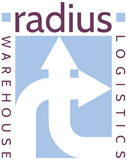Air Freight is a professional shipping method that utilises air transport to move goods. When speed is your top priority, air shipping is the best option.
Keep reading to learn how air shipping works, the different types of equipment available, and the advantages of shipping by air.
What Factors Contribute to AIR Freight Rates?
Air freight rates are typically calculated based on the equipment used and the distance travelled. Other factors that can impact the cost include the variety of goods being shipped (hazardous materials will cost more to ship), the size and weight of the shipment, and whether or not door-to-door service is required.
What Other Factors Can Impact the Cost of Your Project?
A few factors can impact the cost of air shipping, including the type of aircraft used and the distance the goods will travel. Air shipping will be more expensive than other methods simply because it’s faster. If speed is your top priority, air shipping is likely your best option.
The Many Benefits of Shipping via Air
There are many advantages to using air freight to ship goods. Some of these advantages include.
- The Ability to Travel Anywhere in the World: One of the great things about air freight is that it provides access to markets that would otherwise be unreachable. By utilising air transportation, businesses can ship their goods to any corner of the globe quickly and easily.
- Capacity at Your Fingertips: With air freight, you are not limited by capacity constraints like you would be with other modes of transportation. This means you can ship large quantities of goods simultaneously without worrying about running out of space.
- A Variety of Shipping Methods: Air freight offers domestic and international delivery options. Domestic shipments are typically delivered via truck or rail, while international shipments are delivered via plane. This flexibility allows businesses to choose the best delivery option for their needs.
- Safety Measures: When goods are shipped by air, they are typically handled less than other transportation methods. This reduces your product’s wear and tear, increasing safety during transit. In addition, air travel is considered one of the safest forms of transportation, which adds an extra layer of protection for your shipment.
- Aircraft That Transport Cargo: Cargo aircraft are purpose-built aeroplanes explicitly designed for transporting large quantities of cargo. These aircraft typically have large load holds that accommodate oversized pallets or containers full of goods. One disadvantage of using cargo aircraft for air freight is that they often have limited passenger amenities, making them less comfortable for team members accompanying the shipment.
- Aeroplanes Are Used for Commercial Purposes: Commercial planes are passenger aircraft modified to accommodate cargo in their hold. These aircraft typically have a much smaller cargo hold than cargo aircraft, which means they can only accommodate smaller shipments. However, they often have more passenger amenities than cargo aircraft, making them a better option for team members accompanying the shipment.
- Air Charter Services: Air charter services provide private plane rental services for companies that ship their goods by air. These services allow companies to rent an entire plane for their shipment, giving them more flexibility in timing and routing. One disadvantage of using an air charter service is that it can be more expensive than a cargo or commercial airline.
- Equipment Options: Regarding air shipping, you have a few different equipment options. The type of aircraft you use will largely depend on the size and weight of your shipment. You can use a passenger or a small cargo plane for small loads. For larger shipments, you’ll need to use a large cargo plane.
Different types of containers can also be used for air shipping. Again, the type of container you use will depend on the size and weight of your shipment. For small loads, you can use an envelope or a box. You’ll need to use a crate or a pallet for larger loads.
Safety is another important consideration when choosing an aircraft or container for your shipment. For example, if you’re shipping dangerous goods, you’ll need to select a plane and container that meet all safety regulations.
What Are the Different Options for Domestic Deliveries?
There are three main domestic delivery options: door-to-door, airport-to-airport, and shippers warehouse to consignee’s warehouse.
Door-to-door delivery is the most convenient option as it includes all aspects of the shipment, from pickup to delivery.
Airport-to-airport delivery is less expensive but requires the shipper to transport the goods to and from the airport.
Shippers’ warehouse-to-consignee delivery is the least expensive option but also the most complicated, as it requires coordination between multiple parties.
What Are the Different Options for Shipping Internationally?
There are two main types of international airfreight: direct and indirect. Direct flights fly nonstop from origin to destination, while indirect flights make stops. Direct flights are faster but more expensive, while indirect flights are slower but less expensive.
Conclusion
Air freight is a fast, safe, and efficient way to transport goods. When choosing an aircraft or container for your shipment, it’s essential to consider the size and weight of your load and safety regulations. You also need to decide which delivery option is best for your needs.
Whether you’re shipping domestically or internationally, various options are available. Contact us today to learn more about our air freight services and get started on your next shipment!



